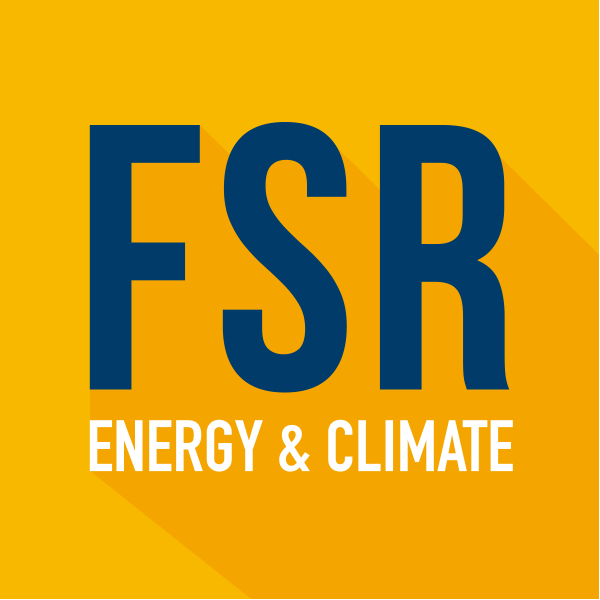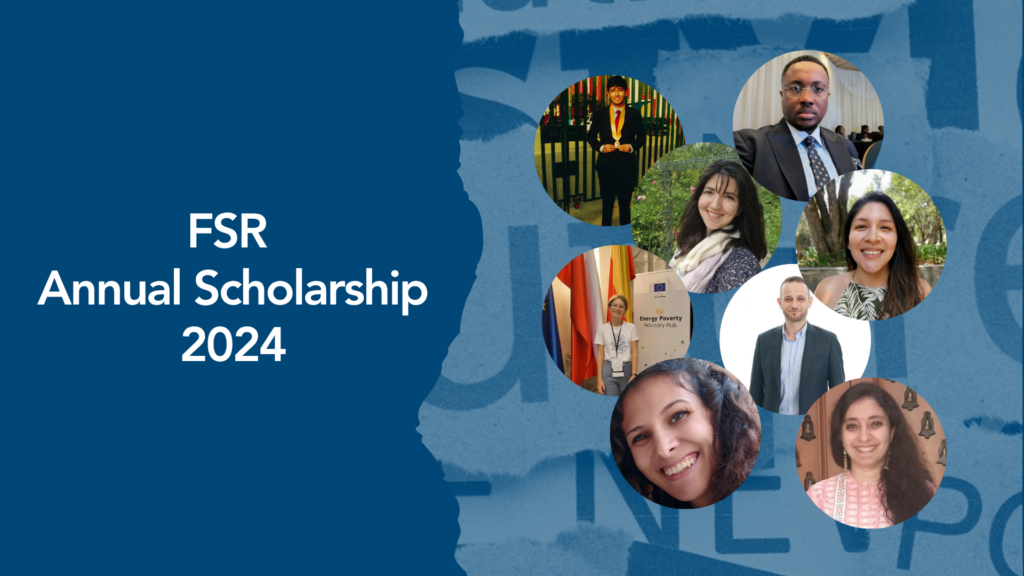Reframing Energy Poverty through a Gender Lens: A Call for Inclusive Policy Solutions
This is the fourth and conclusive installment of the Topic of the Month: Gender perspectives in energy and climate
Introduction
Energy poverty has worsened in the past year due to geopolitical factors, exposing vulnerabilities in Europe’s energy-inefficient housing stock, continued reliance on fossil fuels, and neoliberal energy markets. Even before the Ukraine crisis, one in four Europeans experienced energy poverty. Women disproportionately affected by energy poverty are often not targeted specifically by mitigating solutions and support programs (Feenstra et al, 2024)[1]. This is partly because energy policy remains dominated by technocratic, male-dominated spaces that overlook socio-economic aspects and existing socio-cultural inequalities. The urgency to address the root causes of energy poverty in energy transition policy has never been clearer, especially as energy costs surge across Europe (Murauskaite-Bull et al, 2024)[2].
A just energy transition requires political and social considerations, ensuring equal participation and engagement across different demographics. Energy policies must integrate gender-sensitive approaches, as global energy access and consumption are inherently gendered (Clancy and Feenstra, 2019)[3]. Women, as primary caregivers and household managers, face unique energy challenges, and policies must account for these differences. Recognizing energy poverty as systemic requires intersectional, targeted solutions rather than one-size-fits-all policies.
This article explores gender dimensions of energy poverty through four interlinked aspects: economic, physiological, health, and socio-cultural. Policy development like the European Green Deal and national policy initiatives to enhance the energy transition and mitigate energy poverty create a background and momentum to implement recommendations for gender-sensitive interventions.
Gender Dimensions of Energy Poverty
Energy poverty disproportionately affects women due to economic disparities, physiological vulnerabilities, health implications, and socio-cultural dynamics. I adopt the analytical framework used by Clancy et al. (2017)[4] and EmpowerMed (Birgi et al., 2021)[5] to illustrate these interconnections.
Economic Dimension
Women are at higher risk of energy poverty due to the gender pay gap and greater likelihood of living alone at older ages (EIGE, 2024)[6]. Within the EU, energy affordability is directly linked to income disparities. Women, particularly single parents and pensioners, often struggle to pay their energy bills.
Energy markets and housing conditions further influence energy poverty. Macroeconomic factors—such as energy market liberalization and housing policies—determine access to energy-efficient dwellings. Tenants, often women, have limited control over improving home energy efficiency, exacerbating energy poverty. At the micro level, unpaid care work limits women’s ability to engage in paid employment, reducing financial resilience. A Eurofound (2022) survey found that 44% of part-time working single mothers struggled with utility bill payments[7].
Physiological Dimension
Women’s physiological responses to temperature variations make them more vulnerable to energy poverty. Older women, who live longer than men, are particularly susceptible to heat and cold stress, with significant health risks (WHO, 2014)[8]. Differentiating between summer and winter energy poverty is crucial, as both extreme heat and cold disproportionately affect women’s health. Women generally experience greater discomfort from extreme temperatures and are more likely to suffer from chronic cold-related stress. Energy-inefficient housing exacerbates these risks, especially for older women living alone, underscoring the need for gender-sensitive energy policies.
Health Dimension
Energy poverty has severe physical and mental health consequences. Many energy-poor households rely on firewood for heating and cooking, leading to household air pollution (HAP) and respiratory diseases (Stojilovska et al., 2023)[9]. Prolonged exposure to HAP increases risks of cardiovascular disease, cataracts, asthma, and lung cancer.
Mental health is also significantly impacted. Energy-poor individuals frequently experience anxiety, stress, and depression due to poor living conditions and financial strain. Social isolation further exacerbates these challenges, as stigma and discomfort prevent individuals from hosting visitors in inadequately heated or cooled homes (Clancy et al., 2022)[10].
Socio-Cultural Dimension
Gender roles influence energy consumption patterns. Women, who perform the majority of unpaid domestic labor, engage in energy-intensive tasks such as cooking, cleaning, and laundry. In Europe, 80% of women perform daily household chores compared to 45% of men (EIGE, 2024)[11].
Energy use also varies by household composition. Single women generally consume less energy than single men due to appliance ownership differences, like electric vehicle ownership[12]. However, female-headed households often reside in older, less energy-efficient homes, resulting in higher energy consumption[13]. Additionally, factors such as employment status, marital status, and socio-economic background shape energy needs and vulnerabilities.
An intersectional perspective reveals how multiple inequalities—gender, age, economic status, ethnicity, and disability—intersect to shape experiences of energy poverty (Feenstra et al, 2024)[14]. By acknowledging these factors, policies can be better tailored to address diverse needs effectively.
The Need for Inclusive Energy Policies
Current energy transition policies often fail to account for society’s diversity, despite the necessity for broad support in achieving systemic change. Unequal access to affordable, sustainable energy threatens commitments to energy equity, including the Sustainable Development Goals and the European Commission’s “Clean Energy for All Europeans” initiative. Rising energy prices have exposed social challenges in the energy transition, underscoring the need for inclusive policies that address all consumers’ needs.
Gendered Dimensions of Energy Use and Poverty
As demonstrated above, energy use and access are deeply gendered due to socio-economic divisions. Women and men have distinct energy needs and face different challenges regarding availability, affordability, and safety. The climate crisis further complicates the issue. The EU aims to end reliance on Russian fossil fuels by 2030, but some countries have temporarily returned to coal for energy security, affecting electricity costs. Meanwhile, decarbonizing heating systems introduces additional expenses, intensifying energy poverty challenges. Energy poverty—the inability to access essential domestic energy services—has long affected the quality of life, but recent crises have worsened the situation. The COVID-19 pandemic, inflation, rising energy prices, and the war in Ukraine have significantly increased household energy costs, including in high-income countries. Prior to these crises, between 50-125 million people in the EU faced energy poverty, a figure that has likely grown (Feenstra et al., 2024)[15].
Challenges in Data Collection
Effective policies require comprehensive data, yet EU member states have limited, non-gender-disaggregated, and mostly quantitative energy poverty data. Eurostat updates its statistics every five years, often focusing on household averages, making it inadequate for tracking rapid energy price changes. Given recent energy market volatility, timely, intersectional data is crucial for informed policymaking. Furthermore, treating households as homogeneous units is problematic. Households differ in structure, income, class, ethnicity, and education. Factors like divorce and single parenthood play significant roles in energy vulnerability.
Gender Bias in Energy Policies
Energy policies remain centralized, technocratic, and male-dominated, with little attention to socio-political factors. However, energy poverty is systemic and requires intersectional solutions considering gender, age, and socio-economic status. Structural issues—such as inadequate housing, fossil fuel dependency, and systemic inequalities—disproportionately impact women. The shift from centralized fossil fuel-based energy systems to decentralized renewables presents an opportunity to integrate gender-sensitive approaches. Without active efforts, gender biases from the fossil fuel sector may persist in the renewable sector.
A gender-inclusive approach could mitigate both climate crises and social inequality, benefiting society broadly. Solutions include scaling up renewables, subsidizing heat pumps, and supporting deep renovation programs for low-income households. Women’s participation in the energy sector—as users, business owners, technicians, service providers, and policymakers—is essential for a successful transition (Feenstra et al., 2024)[16].
Conclusion: A Just Energy Transition for All
Recent crises—including COVID-19, inflation, and the energy crisis—have worsened energy poverty globally. Once primarily affecting low-income households, the crisis now extends to middle-income groups as well. Governments must support affected citizens, particularly those in social housing and lower-middle-income categories. Financial instruments such as the EU ETS system, NextGenerationEU, the Just Transition Fund, and the Recovery and Resilience Fund should be mobilized to fund energy poverty mitigation efforts.
The shift from centralized fossil fuel-based systems to decentralized renewables provides an opportunity to incorporate gender and social justice into energy policies. The Clean Energy Package puts consumers at the core of the transition, encouraging individuals and communities to become “prosumers” who both consume and generate energy. The Renewable Energy Directive (REDII) supports energy communities and collective self-consumption, which can combat energy poverty while promoting gender equity. However, enabling frameworks and incentives are needed to ensure fair participation.
Governments and policymakers must prioritize energy justice by promoting local energy production, community-driven models, and fairer profit distribution instead of concentrating benefits within large corporations. Community energy initiatives empower vulnerable households, helping them navigate energy market volatility and ensuring greater resilience and independence.
Policy Recommendations for a Gender-Just Energy Transition
To ensure gender justice in EU energy transition policies, several recommendations can be proposed (UserTCP, 2025)[17]:
- Gender-just Policy Design
- Develop energy policies that address diverse needs and recognize clean, affordable energy as a human right.
- Implement targeted programs for women, addressing issues such as summer energy poverty and associated health impacts.
- Establish a cross-sectoral pan-European strategy that incorporates gender-disaggregated data, research, and policy coherence.
- Position the EU as a global leader in gender-inclusive energy policies by utilizing communication strategies, gender training, impact assessments, and gender budgeting.
- Create an EU advisory board dedicated to gender inclusivity in energy policy.
- Ensure gender considerations are integrated into EU policy discussions and legislative frameworks.
- Gender-Disaggregated Data Collection
- Recognize that energy poverty is driven by systemic issues such as inadequate housing, fossil fuel dependency, and inequality, disproportionately affecting women-led households.
- Increase awareness of the intersection of gender and energy poverty and advocate for an inclusive definition of “households in vulnerable situations.”
- Collect gender-disaggregated data annually on heating and cooling needs to improve energy poverty measurement, potentially through Eurostat.
- Targeted Financing for Energy Poverty Alleviation
- Address the landlord-tenant dilemma, which prevents low-income renters from making energy-efficient upgrades.
- Ensure financial programs specifically target energy-poor households, particularly those headed by women.
- Introduce gender indicators in financing schemes such as rental acts, green leases, and feed-in tariffs.
- Expand funding for gender-equitable energy poverty research and innovation through EU programs such as Horizon and Life.
The Path Forward: Accelerating Action
The challenge now is to accelerate action. Addressing gender disparities is crucial in the energy transition. Women and underrepresented groups should be viewed as active agents of change rather than passive beneficiaries of aid. Mainstreaming gender in energy policy will lead to more sustainable, inclusive, and effective solutions that maximize financial, social, and environmental resources. Implementing gender-transformative policies will ensure a just and equitable energy transition, reducing energy poverty while fostering broader social benefits. Decentralized, citizen-driven solutions like energy communities and collective self-consumption can address both existing and rising energy poverty while integrating gender and social equity goals. Prioritizing gender-just policymaking will enable the energy transition to drive both climate and social justice, creating a more inclusive and resilient future.
Dr. Mariëlle Feenstra, co-founder and scientific director 75inQ Institute Inclusive Energytransition. She was awarded the 1st Annual Lights on Women Scholarship, Florence School of Regulation (2019).
[1] https://75inq.com/services/library/gender-aspects-of-the-rising-cost-of-living-and-the-impact-of-the-energy-crisis/
[2] https://75inq.com/services/library/gender-and-energy-the-effects-of-the-energy-transition-on-women/
[3] https://www.europarl.europa.eu/thinktank/en/document/IPOL_STU(2019)608867
[4] https://www.europarl.europa.eu/RegData/etudes/STUD/2017/596816/IPOL_STU(2017)596816_EN.pdf
[5] https://www.wecf.org/de/wp-content/uploads/2018/10/EmpowerMed_Gender-and-energy-poverty-Factsheet-2021.pdf
[6] https://eige.europa.eu/gender-equality-index/2024
[7] https://www.eurofound.europa.eu/en/blog/2022/energy-poverty-looms-cost-living-increases-data-behind-difficulties#:~:text=The%20latest%20round%20of%20the,poverty%20is%20a%20growing%20risk.
[8] https://iris.who.int/bitstream/handle/10665/144781/9789241508186_eng.pdf
[9] https://www.sciencedirect.com/science/article/abs/pii/S2214629623000476
[10] https://www.europarl.europa.eu/RegData/etudes/STUD/2022/736899/IPOL_STU(2022)736899_EN.pdf
[11] https://eige.europa.eu/gender-equality-index/2024
[12] https://www.matfoundrygroup.com/blog/is-there-an-ev-gender-gap-why-female-drivers-are-reluctant-to-go-electric
[13] https://www.europarl.europa.eu/RegData/etudes/STUD/2022/736899/IPOL_STU(2022)736899_EN.pdf
[14] https://75inq.com/services/library/gender-aspects-of-the-rising-cost-of-living-and-the-impact-of-the-energy-crisis/
[15] https://75inq.com/services/library/gender-aspects-of-the-rising-cost-of-living-and-the-impact-of-the-energy-crisis/
[16] https://75inq.com/services/library/gender-aspects-of-the-rising-cost-of-living-and-the-impact-of-the-energy-crisis/
[17] https://userstcp.org/wp-content/uploads/2025/02/USERSTCP-A4-GE-1-260225-final.pdf






